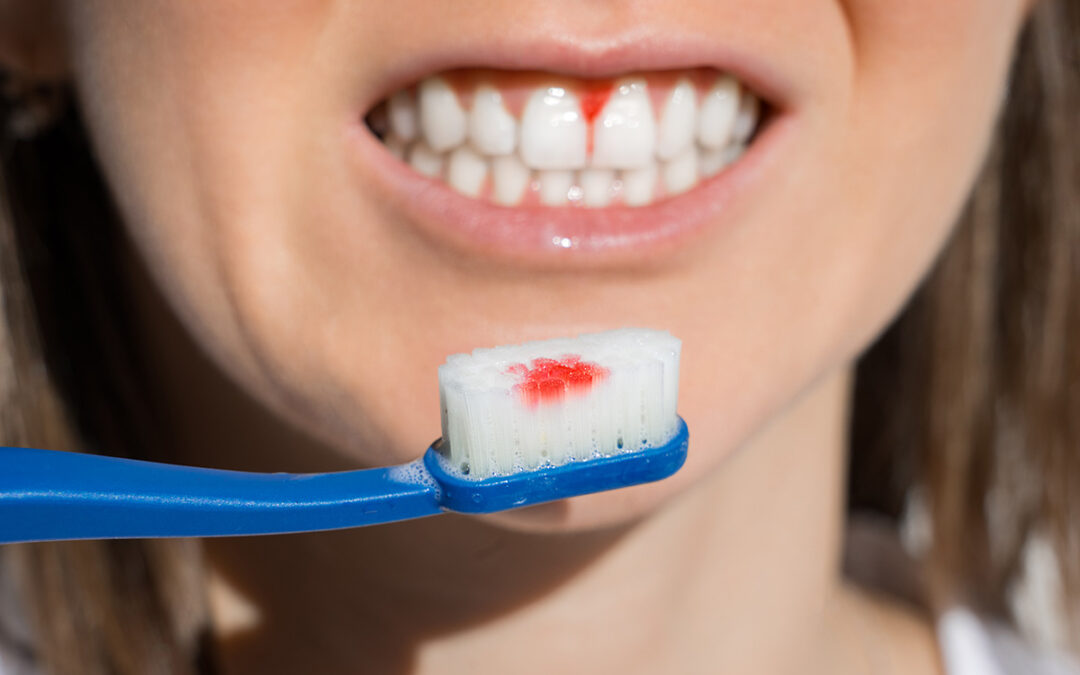When it comes to oral health, many people focus heavily on the appearance and health of their teeth. And while keeping your teeth free from cavities, stains, and decay is extremely important for your oral health and the appearance of your smile, protecting your gum health is equally as important.
Nearly half of all adults in the U.S. have advanced gum disease, and when it progresses to its later stages, it can cause many serious oral health problems. Thankfully, gum disease can be prevented through regular brushing, flossing, and cleanings at the dentist. And when it starts, it can be slowed down, treated, and even reversed with the help of a dentist.
Stage 1: Gingivitis
The first stage of gum disease is called gingivitis. If you notice that your gums frequently bleed, whether it’s during flossing or brushing, it may be a sign that you have gingivitis. In some cases, gingivitis causes no symptoms or only minor symptoms, such as redness and swelling. Gingivitis can be reversed with early treatment, which includes better oral hygiene, dietary changes, and regular visits to the dentist.
Stage 2: Periodontitis
When gingivitis goes untreated and worsens, it can turn into periodontitis. This condition occurs when plaque continues to accumulate and is able to reach the area below the gumline. When plaque reaches this area, it can produce toxins which trigger further inflammation in the gums.
In response, the gums may recede and cause gaps to form around the teeth. As periodontitis advances, it can result in noticeable separations between the gums and teeth, and teeth may begin to loosen as infections damage bone.
Stage 3: Advanced Periodontitis
When periodontitis goes untreated and worsens, it can turn into advanced periodontitis. This condition is a more severe version of periodontitis, and all the symptoms associated with periodontitis are present but worse.
Teeth become even looser, bone loss becomes more severe and noticeable, gums become more swollen and likely to bleed, and teeth become highly sensitive to hot and cold temperatures due to nerve exposure.
Always Be on the Lookout for Symptoms of Gum Disease
Gum disease can sneak up on you. It’s easy to go from no symptoms, to mild symptoms, to full-blown periodontitis in a matter of years, if not months. Regularly brushing your teeth and flossing, as well as eating a healthy diet and avoiding sugary foods and drinks, is a good first step towards combatting gum disease.
It’s also important to get regular cleanings and checkups by a dentist. Gingivitis, the earliest stage of gum disease, can be treated and reversed with the help of a dentist. Even when plaque has hardened into tartar and periodontitis may be about to occur, a dentist can help reverse course by removing it, which can be difficult or impossible to achieve through brushing and flossing alone.
We’re Experts in Diagnosing and Treating All Stages of Gum Disease
At 101st Adult Dentistry, we know how damaging the effects of gum disease can be. It’s our goal to help people maintain perfect gum health and to reverse the progression of existing gum disease.
Dr. Hnarakis at our practice isn’t just a dentist, he’s also a Board-Certified periodontist. That means he has advanced expertise, training, and experience with gums and gum-related diseases. No matter where your gums are on the three stages of gum disease, we can create a plan to help you regain control of your oral and gum health.
Request a dental appointment today and let us help you achieve a beautiful, healthy, and protected smile.

